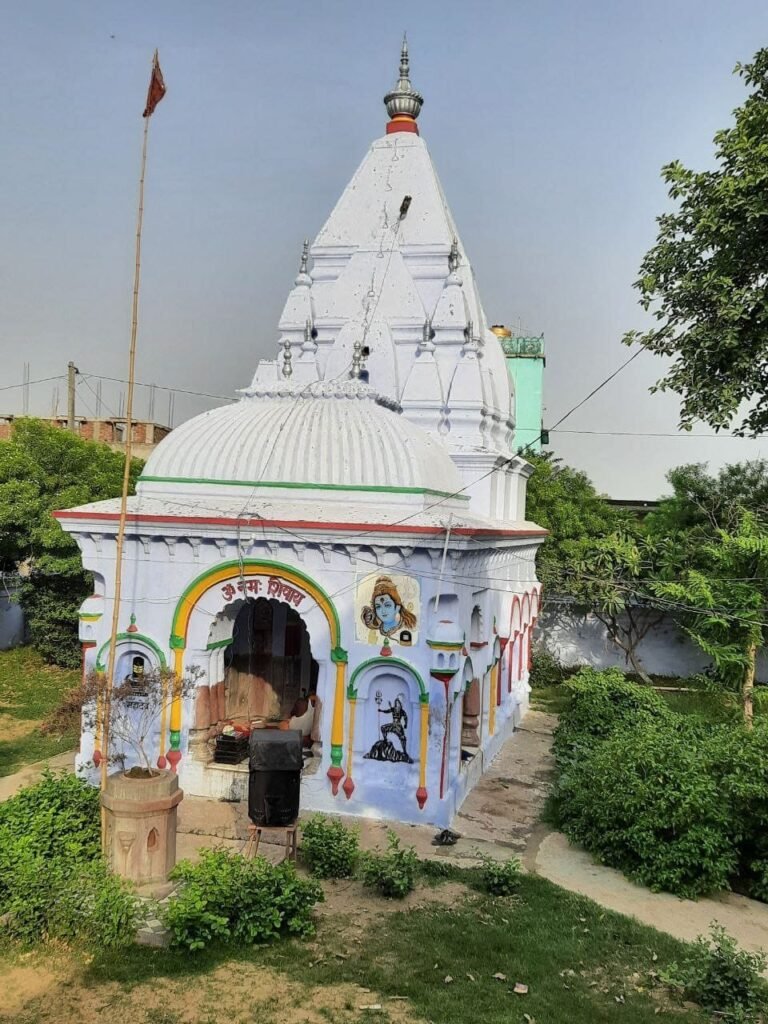
Kutri Shivalayas are ancient temples dedicated to Lord Shiva, often found in villages across India. Their historical significance and architecture can vary based on regional influences and the specific time period in which they were built. Here are some types of Kutri Shivalayas you might find in a village with a temple complex that’s more than 100 years old:
- Stone Temples: These are built using local stone and often feature intricate carvings and sculptures. They are known for their durability and can have elaborate architecture.
- Mud Temples: Constructed using mud and other local materials, these temples are simpler in design and often reflect the traditional building techniques of the region.
- Wooden Temples: Found in areas with abundant forests, these temples are made primarily of wood and can feature beautifully carved wooden pillars and roofs.
- Brick Temples: These are built using bricks and mortar and may have been renovated or expanded over time, blending traditional and newer architectural styles.
- Simple Shrines: Some Kutri Shivalayas are modest in design, consisting of a small sanctum with minimal decorations. These are often maintained by local communities.
- Composite Temples: These temples might combine elements from different architectural styles and materials, reflecting the changes in construction techniques over time.
If you have a specific village or temple complex in mind, the characteristics might be more specific to that region’s history and cultural practices.
What is Required Kutri Shivalaya in Village more than 100 years old temple complex?
For a Kutri Shivalaya (an ancient Shiva temple) in a village that is more than 100 years old, certain requirements or considerations might be important to maintain its historical and spiritual significance. Here are some key aspects to consider:
1. Preservation and Restoration:
- Structural Integrity: Ensure the temple’s structure is stable and safe. This may involve restoration work to address any wear and tear over the years.
- Historical Authenticity: Any restoration should aim to preserve the original architectural style and materials as much as possible.
2. Cultural and Religious Practices:
- Maintenance of Rituals: Continue traditional rituals and ceremonies that have been performed at the temple for generations.
- Community Engagement: Involve the local community in temple activities to maintain its cultural relevance and spiritual significance.
3. Documentation:
- Historical Records: Maintain records of the temple’s history, architectural features, and any significant events or figures associated with it.
- Photographic and Written Archives: Document the temple’s current condition and any restoration work done for future reference.
4. Legal and Administrative Aspects:
- Ownership and Management: Ensure proper documentation of ownership and management responsibilities.
- Compliance with Regulations: Adhere to any local regulations regarding historical preservation and religious sites.
5. Accessibility and Safety:
- Visitor Access: Make sure the temple is accessible to visitors while preserving its sanctity.
- Safety Measures: Implement safety measures to protect both the temple and its visitors.
6. Financial Support:
- Funding for Maintenance: Secure funding or resources for ongoing maintenance and restoration work.
- Community Contributions: Encourage donations or support from the local community and devotees.
By focusing on these aspects, you can help ensure that the Kutri Shivalaya continues to serve as a valuable cultural and spiritual landmark for future generations.
Who is Required Kutri Shivalaya in Village more than 100 years old temple complex?
For a Kutri Shivalaya (ancient Shiva temple) in a village that is over 100 years old, the involvement of various stakeholders is crucial for its preservation and continued functioning. Here’s a breakdown of who might be required:
**1. Local Community and Devotees:
- Temple Trustees or Committee Members: Individuals who manage the day-to-day operations of the temple and ensure that religious practices are maintained.
- Local Residents: Community members who support the temple through participation in rituals, maintenance activities, and financial contributions.
**2. Religious Leaders and Priests:
- Temple Priests: Responsible for performing daily rituals, ceremonies, and maintaining the sanctity of the temple.
- Religious Scholars: Provide guidance on religious practices and help in preserving the temple’s traditions.
**3. Cultural and Historical Experts:
- Archaeologists: Assist in assessing the historical and architectural significance of the temple and advise on restoration work.
- Historians: Help document the temple’s history and ensure that any changes or restorations are in line with its historical context.
**4. Government and Regulatory Bodies:
- Local Government Authorities: Oversee any legal requirements related to the temple’s preservation and ensure compliance with local regulations.
- Cultural Heritage Organizations: Provide support and resources for the preservation of historical sites.
**5. Architects and Conservators:
- Restoration Experts: Specialize in the preservation and restoration of ancient structures, ensuring that the temple’s architectural integrity is maintained.
- Structural Engineers: Assess and address any structural issues to ensure the temple’s safety and stability.
**6. Donors and Sponsors:
- Individual Donors: Contribute financially to support the temple’s maintenance and restoration.
- Organizations and NGOs: Provide funding or resources for the preservation of cultural heritage sites.
**7. Volunteers:
- Community Volunteers: Assist in various activities related to the temple, including cleaning, organizing events, and supporting daily operations.
Each of these groups plays a vital role in ensuring the Kutri Shivalaya remains a cherished and functional part of the village’s cultural and spiritual landscape.
When is Required Kutri Shivalaya in Village more than 100 years old temple complex?
The requirement for attention to a Kutri Shivalaya (an ancient Shiva temple) in a village that is over 100 years old can arise at various times, depending on specific needs and circumstances. Here are key instances when intervention or attention might be necessary:
**1. Routine Maintenance:
- Regular Inspections: Periodic checks to assess the condition of the temple’s structure and facilities.
- Ongoing Rituals: Ensuring that daily, weekly, and annual religious ceremonies are carried out properly.
**2. Restoration and Preservation:
- Structural Issues: When there are signs of wear, damage, or structural instability, restoration work becomes crucial.
- Architectural Deterioration: Addressing issues related to the deterioration of historical and architectural elements.
**3. Cultural and Religious Events:
- Festivals and Ceremonies: Preparing the temple for significant religious festivals or ceremonies which may require special attention or enhancements.
- Anniversary Events: Celebrations marking the temple’s centennial or other milestones may need specific planning and resources.
**4. Community Needs:
- Community Requests: Addressing any concerns or needs expressed by the local community or temple devotees.
- Increased Visitor Traffic: Managing the temple when there is a surge in visitors, such as during religious festivals or pilgrimages.
**5. Emergency Situations:
- Natural Disasters: Responding to damage caused by events like floods, earthquakes, or storms.
- Accidents or Vandalism: Repairing any damage caused by accidents or vandalism.
**6. Legal and Regulatory Compliance:
- Regulatory Inspections: Complying with inspections or requirements set by local authorities or heritage organizations.
- Documentation Updates: Updating records or complying with changes in cultural heritage regulations.
**7. Financial and Administrative Needs:
- Funding Requirements: Securing financial support for maintenance, restoration, or development projects.
- Management Changes: Adapting to changes in temple management or administrative structures.
**8. Historical Research:
- Research Projects: Engaging in historical research or documentation projects that may require special attention or resources.
Addressing these needs proactively ensures that the Kutri Shivalaya remains a vibrant and meaningful part of the community while preserving its historical and cultural significance.
Where is Required Kutri Shivalaya in Village more than 100 years old temple complex?
The location of a Kutri Shivalaya (ancient Shiva temple) in a village that is over 100 years old typically varies depending on regional factors and historical development. Here are common places where you might find such a temple:
**1. Central Village Areas:
- Village Center: Often, ancient temples are located in the central or prominent area of the village, serving as a focal point for religious and community activities.
- Historical Sites: In villages with historical significance, the temple might be situated near other heritage sites or landmarks.
**2. On Elevated or Sacred Grounds:
- Hilltops or Elevated Areas: In some regions, temples are built on elevated locations or hilltops, considered sacred and offering a panoramic view of the surroundings.
- Sacred Groves: Temples might be located within sacred groves or natural settings considered spiritually significant.
**3. Near Water Bodies:
- Rivers or Streams: Historically, many temples were constructed near rivers, streams, or lakes, which are considered auspicious and contribute to the temple’s spiritual ambiance.
- Ponds or Wells: Some ancient temples are located near village ponds or wells, which were often used for ritualistic purposes.
**4. Village Peripheries:
- Outer Edges: In some cases, ancient temples might be situated on the outskirts of the village, especially if they were built as part of a larger religious or cultural complex.
**5. Historical Routes:
- Pilgrim Routes: Temples along ancient trade or pilgrimage routes, which were significant for travelers and devotees, might be found in these locations.
**6. Adjacent to Other Structures:
- Residential Areas: Some older temples might be located near residential areas or within the precincts of a traditional village settlement.
- Fortified Areas: In regions with historical fortifications, temples might be situated within or near these structures.
If you have a specific village or region in mind, the exact location can often be determined through local historical records, community knowledge, or by consulting local heritage experts.
How is Required Kutri Shivalaya in Village more than 100 years old temple complex?
The “how” of maintaining or addressing a Kutri Shivalaya (an ancient Shiva temple) in a village that is more than 100 years old involves several aspects related to preservation, management, and community involvement. Here’s how you can approach it:
**1. Preservation and Restoration:
- Assessment: Conduct a thorough assessment of the temple’s current condition, including structural integrity, historical features, and any signs of wear or damage.
- Restoration Work: Engage experts in historical restoration to undertake necessary repairs while preserving the temple’s original architecture and design.
- Regular Maintenance: Implement a routine maintenance schedule to address minor issues before they become major problems.
**2. Cultural and Religious Practices:
- Maintain Rituals: Ensure that traditional rituals and ceremonies are performed according to longstanding practices, preserving the temple’s spiritual significance.
- Community Participation: Encourage local community members and devotees to actively participate in temple activities, fostering a sense of ownership and continuity.
**3. Documentation and Research:
- Historical Records: Document the temple’s history, architectural details, and any significant events or figures associated with it.
- Archival Work: Create and maintain archives, including photographs, written records, and any historical artifacts related to the temple.
**4. Legal and Administrative Management:
- Ownership and Compliance: Ensure that the temple’s ownership and management are well-documented and comply with local regulations and heritage preservation laws.
- Funding and Resources: Secure financial resources for maintenance and restoration through donations, grants, or sponsorships.
**5. Community Engagement:
- Local Involvement: Engage the local community in decision-making processes related to the temple’s upkeep and activities.
- Educational Programs: Offer educational programs or workshops about the temple’s history and cultural significance to both locals and visitors.
**6. Safety and Accessibility:
- Safety Measures: Implement safety measures to protect both the temple’s structure and its visitors, including structural reinforcements and emergency protocols.
- Visitor Access: Ensure that the temple is accessible to visitors while maintaining its sanctity and respecting its religious significance.
**7. Collaboration with Experts:
- Architects and Conservators: Work with professionals who specialize in historical architecture and conservation to guide restoration efforts.
- Historians and Archaeologists: Collaborate with experts to ensure that any changes or restorations are historically accurate and respectful of the temple’s heritage.
By addressing these aspects, you can effectively manage and preserve a Kutri Shivalaya, ensuring that it remains a cherished and functional part of the village’s cultural and spiritual landscape.
Case Study on Kutri Shivalaya in Village more than 100 years old temple complex?
1. Introduction
- Background: Provide a brief overview of the Kutri Shivalaya, including its historical and cultural significance.
- Objective: Define the purpose of the case study, such as understanding the temple’s historical evolution, assessing preservation needs, or evaluating community impact.
2. Historical Context
- Origin and Development: Detail the temple’s founding, architectural style, and any historical events that have influenced its development.
- Significant Figures: Mention key historical figures associated with the temple, including patrons, builders, or spiritual leaders.
- Historical Importance: Discuss the temple’s role in regional or local history and its significance to the community.
3. Architectural Features
- Design and Structure: Describe the temple’s architectural style, materials used, and any unique features or decorations.
- Changes Over Time: Document any modifications or restorations that have occurred over the years, including their impact on the temple’s appearance and functionality.
- Condition Assessment: Provide an assessment of the temple’s current structural condition, noting areas of concern or deterioration.
4. Cultural and Religious Practices
- Rituals and Ceremonies: Outline the traditional rituals, festivals, and ceremonies performed at the temple.
- Community Involvement: Describe how the local community participates in and supports temple activities.
- Preservation of Traditions: Discuss efforts to maintain and preserve the temple’s cultural and religious practices.
5. Preservation and Restoration
- Restoration Efforts: Detail any past or ongoing restoration projects, including their objectives and outcomes.
- Challenges Faced: Identify challenges encountered in the preservation process, such as funding issues, material shortages, or environmental factors.
- Best Practices: Highlight successful strategies and practices used in the restoration and maintenance of the temple.
6. Community Impact
- Local Engagement: Examine how the temple influences the local community, including its role in community cohesion and cultural identity.
- Economic Impact: Assess any economic benefits derived from the temple, such as tourism, local employment, or business opportunities.
- Educational Value: Discuss the temple’s role in education, including its contribution to historical knowledge and cultural awareness.
7. Future Prospects
- Sustainability: Analyze the long-term sustainability of the temple’s preservation and continued functioning.
- Future Plans: Outline any planned future initiatives or projects related to the temple’s upkeep or community involvement.
- Recommendations: Provide recommendations for improving preservation efforts, enhancing community engagement, or addressing any identified challenges.
8. Conclusion
- Summary: Summarize key findings from the case study, emphasizing the temple’s significance and the importance of ongoing preservation efforts.
- Final Thoughts: Offer reflections on the temple’s future and its role in the community.
9. Appendices and References
- Documentation: Include any relevant documents, photographs, or maps related to the temple.
- References: List sources of information used in the case study, including historical records, interviews, and scholarly articles.
Example Case Study
Title: Preservation and Community Impact of the Kutri Shivalaya Temple in [Village Name]
1. Introduction
- The Kutri Shivalaya in [Village Name] has been a central spiritual and cultural landmark for over 100 years. This case study aims to explore its historical significance, assess its current condition, and evaluate its impact on the local community.
2. Historical Context
- Established in [Year], the temple was built during the [specific historical period]. Key figures include [Name], who funded its construction. The temple has played a crucial role in [specific historical events or periods].
3. Architectural Features
- The temple features [describe style, materials, and unique elements]. Over the years, it has undergone [describe modifications]. Currently, the structure faces [describe condition].
4. Cultural and Religious Practices
- The temple hosts [describe rituals and festivals]. Community members actively participate in [describe involvement]. Efforts to preserve traditional practices include [describe efforts].
5. Preservation and Restoration
- Recent restoration efforts aimed to [describe goals]. Challenges included [list challenges]. Successful practices include [highlight successes].
6. Community Impact
- The temple fosters community cohesion through [describe involvement]. It contributes economically by [describe benefits]. Educational initiatives include [describe programs].
7. Future Prospects
- To ensure sustainability, [describe strategies]. Planned initiatives include [list projects]. Recommendations include [provide suggestions].
8. Conclusion
- The Kutri Shivalaya remains a vital part of [Village Name]’s cultural and spiritual landscape. Ongoing preservation efforts and community involvement are essential for its future.
9. Appendices and References
- Include photographs, historical documents, and a bibliography of sources used.
This structure provides a comprehensive overview of the temple’s significance and current status, guiding future preservation and community engagement efforts.
White paper on Kutri Shivalaya in Village more than 100 years old temple complex?
Preservation and Management of Kutri Shivalaya in Village
1. Executive Summary
- Overview: Briefly summarize the key points of the white paper, including the temple’s significance, current challenges, and recommended actions.
- Purpose: State the objective of the white paper, such as seeking support for preservation efforts, informing stakeholders, or guiding future initiatives.
2. Introduction
- Background: Introduce the Kutri Shivalaya temple, its history, and its importance to the village and the broader cultural and spiritual context.
- Scope: Define the scope of the white paper, including the aspects of preservation, community impact, and future prospects that will be covered.
3. Historical Context
- Temple History: Provide a detailed history of the temple, including its origin, architectural style, and any significant historical events or figures associated with it.
- Cultural Significance: Explain the role of the temple in the local culture and its historical importance within the region.
4. Architectural and Structural Analysis
- Design and Features: Describe the architectural style, materials used, and unique design elements of the temple.
- Current Condition: Assess the current structural condition of the temple, noting any signs of deterioration or areas in need of repair.
- Preservation Needs: Identify specific preservation needs based on the condition assessment.
5. Cultural and Religious Practices
- Rituals and Ceremonies: Outline the traditional rituals and ceremonies performed at the temple and their significance to the local community.
- Community Engagement: Discuss how the local community interacts with and supports the temple, including participation in religious practices and maintenance activities.
6. Preservation and Restoration Efforts
- Historical Preservation: Review past preservation and restoration efforts, including their successes and challenges.
- Current Projects: Detail any ongoing or planned restoration projects, including objectives, timelines, and funding sources.
- Best Practices: Highlight successful strategies and best practices in temple preservation.
7. Community Impact and Benefits
- Social Impact: Examine the temple’s role in fostering community cohesion, cultural identity, and social engagement.
- Economic Impact: Assess the economic benefits derived from the temple, such as tourism revenue, local employment, and business opportunities.
- Educational Value: Discuss the educational impact of the temple, including its contribution to historical and cultural education.
8. Challenges and Opportunities
- Challenges: Identify key challenges facing the temple, such as funding limitations, structural issues, or regulatory hurdles.
- Opportunities: Explore potential opportunities for enhancing preservation efforts, increasing community involvement, and leveraging resources.
9. Recommendations
- Preservation Strategies: Propose specific strategies for preserving and restoring the temple, including recommended actions, resources needed, and potential partners.
- Community Engagement: Suggest ways to enhance community involvement and support for the temple.
- Future Planning: Provide recommendations for long-term planning and sustainability of the temple’s preservation and management.
10. Conclusion
- Summary: Recap the key findings and recommendations of the white paper.
- Call to Action: Encourage stakeholders to take specific actions based on the recommendations provided.
11. Appendices
- Supporting Documents: Include additional documents such as historical records, architectural drawings, photographs, and relevant research findings.
- References: List all sources of information used in the white paper, including historical records, interviews, and academic studies.
Example White Paper
Title: Preservation and Management of Kutri Shivalaya Temple in [Village Name]
1. Executive Summary
- The Kutri Shivalaya temple, an ancient Shiva temple in [Village Name], faces several challenges related to preservation and community engagement. This white paper outlines the temple’s historical significance, current condition, and provides recommendations for its preservation and future management.
2. Introduction
- The Kutri Shivalaya temple, established in [Year], is a vital part of the village’s cultural heritage. This white paper aims to address preservation needs and outline strategies for maintaining the temple’s historical and cultural significance.
3. Historical Context
- Built during [specific period], the temple features [describe architectural style]. Key figures associated with the temple include [Name]. It has played a significant role in [describe historical events].
4. Architectural and Structural Analysis
- The temple’s design includes [describe features]. Recent assessments reveal [describe condition]. Immediate preservation needs include [list needs].
5. Cultural and Religious Practices
- The temple hosts [describe rituals and ceremonies]. Community involvement includes [describe participation]. Efforts to preserve traditions involve [describe efforts].
6. Preservation and Restoration Efforts
- Previous restoration projects aimed to [describe goals]. Current efforts include [list projects]. Best practices include [highlight practices].
7. Community Impact and Benefits
- The temple fosters community cohesion by [describe impact]. Economically, it contributes through [describe benefits]. Educationally, it provides [describe value].
8. Challenges and Opportunities
- Challenges include [list challenges]. Opportunities for improvement include [describe opportunities].
9. Recommendations
- For preservation, implement [describe strategies]. Enhance community engagement through [suggest methods]. Plan for long-term sustainability by [recommend actions].
10. Conclusion
- The Kutri Shivalaya remains a cornerstone of [Village Name]’s cultural heritage. Effective preservation and community involvement are crucial for its continued significance.
11. Appendices
- Historical records, architectural drawings, and photographs are included in the appendices. References are listed in the bibliography.
This white paper structure provides a comprehensive overview of the Kutri Shivalaya’s significance, challenges, and recommendations, aimed at guiding stakeholders and ensuring effective preservation and management.
Industrial Application of Kutri Shivalaya in Village more than 100 years old temple complex?
The industrial application of a Kutri Shivalaya (an ancient Shiva temple) in a village that is over 100 years old can involve leveraging the temple’s historical, cultural, and architectural significance to drive various industrial and economic benefits. While the primary purpose of such a temple is often spiritual and cultural, there are several ways it can be integrated into industrial applications:
**1. Tourism and Heritage Management:
- Cultural Tourism: Develop tourism initiatives around the temple, such as guided tours, cultural festivals, and educational programs. This can attract visitors, boost local businesses, and create jobs.
- Heritage Site Management: Collaborate with heritage management organizations to promote and maintain the temple as a historical landmark.
**2. Community Development:
- Local Economic Development: Use the temple as a focal point for community development projects, including infrastructure improvements and local artisan markets.
- Skill Development Programs: Offer training and workshops in traditional crafts, restoration techniques, or tourism management to enhance local skills and employability.
**3. Cultural and Creative Industries:
- Art and Craft Production: Promote traditional crafts and art inspired by the temple’s architecture and cultural significance. This can include pottery, textiles, and sculptures.
- Creative Workshops: Host workshops and events that explore traditional art forms, music, and dance related to the temple’s cultural heritage.
**4. Environmental Sustainability:
- Green Tourism Practices: Implement sustainable practices for managing tourism and preserving the temple, such as eco-friendly infrastructure and waste management.
- Community-Based Conservation: Engage local communities in conservation efforts, including environmental education and sustainable resource use.
**5. Educational and Research Opportunities:
- Academic Research: Partner with academic institutions for research on the temple’s history, architecture, and cultural significance. This can enhance knowledge and attract scholars.
- Educational Programs: Develop educational programs and resources related to the temple’s history and cultural practices for schools and visitors.
**6. Technology Integration:
- Digital Preservation: Use digital technologies for documenting and preserving the temple’s architectural and historical features, including 3D modeling and virtual tours.
- Visitor Management Systems: Implement technology for managing visitor information, ticketing, and feedback to enhance the visitor experience.
**7. Economic Development Projects:
- Local Business Partnerships: Partner with local businesses to develop services and products related to the temple, such as souvenirs, local cuisine, or accommodation.
- Community Investment: Invest in community projects that improve infrastructure, healthcare, or education, funded through tourism and related activities.
**8. Cultural Diplomacy:
- International Collaboration: Engage in cultural exchange programs with international organizations to promote the temple and village on a global stage.
- Cultural Events: Host international cultural events or conferences that highlight the temple’s heritage and attract global visitors.
Case Study Example:
Title: Leveraging the Kutri Shivalaya Temple Complex for Sustainable Development in [Village Name]
1. Introduction
- The Kutri Shivalaya temple, a historic site over 100 years old in [Village Name], presents opportunities for industrial and economic development through its cultural and historical value.
2. Tourism and Heritage Management
- Initiatives: Develop a tourism strategy that includes guided tours, heritage festivals, and educational workshops.
- Impact: Increased visitor numbers boost local businesses and create job opportunities.
3. Community Development
- Projects: Establish local markets and skill development programs focused on traditional crafts and tourism management.
- Outcome: Improved local infrastructure and enhanced employment opportunities.
4. Cultural and Creative Industries
- Crafts: Promote traditional arts and crafts inspired by the temple’s architecture.
- Workshops: Organize creative workshops to engage locals and attract visitors.
5. Environmental Sustainability
- Practices: Implement eco-friendly tourism practices and engage the community in conservation efforts.
- Benefits: Reduced environmental impact and increased community awareness.
6. Educational and Research Opportunities
- Partnerships: Collaborate with academic institutions for research and educational programs.
- Resources: Provide resources for schools and researchers interested in the temple’s history.
7. Technology Integration
- Preservation: Use digital technologies for documenting and preserving the temple’s features.
- Visitor Experience: Implement systems for managing visitor information and enhancing their experience.
8. Economic Development Projects
- Business Partnerships: Develop local businesses around the temple’s attractions.
- Investment: Invest in community projects funded by tourism revenue.
9. Cultural Diplomacy
- Programs: Engage in international cultural exchange programs and host global cultural events.
- Promotion: Increase global awareness of the temple and village.
10. Conclusion
- The Kutri Shivalaya temple can play a central role in sustainable economic and community development. By leveraging its cultural significance, the temple can drive positive change and growth for [Village Name].
This white paper outlines how the Kutri Shivalaya can be integrated into various industrial applications while preserving its cultural and historical integrity.






